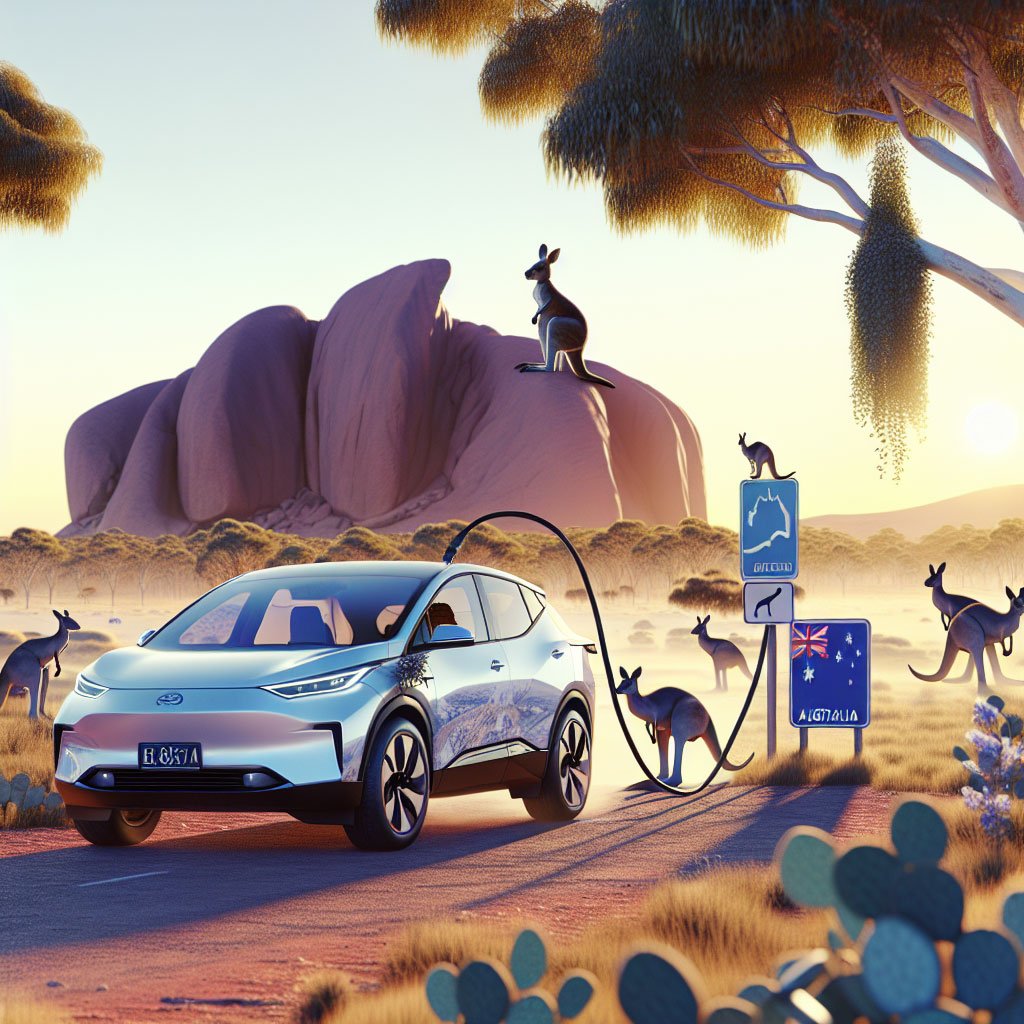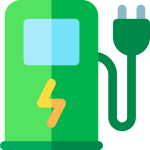
The Commonwealth and state and territory treasurers have taken a formal step toward a national road‑user charging system for electric vehicles (EVs), signalling an important juncture in Australia’s transition to zero‑emission transport.
In a joint statement released by Federal Treasurer Jim Chalmers and his state and territory counterparts, officials set out the principles that will guide policy work on a potential kilometres‑based charge for EVs. The statement acknowledges the rapid uptake of electric vehicles and the need for road‑funding arrangements that are fair, simple and do not discourage further electrification of the fleet.
Why a road‑user charge is back on the agenda
Australia’s current road funding model relies heavily on fuel excise – a per‑litre tax applied to petrol and diesel. As vehicles become more fuel‑efficient and battery electric vehicles gain market share, excise receipts are projected to decline, potentially creating a funding shortfall for road construction and maintenance. The federal joint statement frames reform as an opportunity to protect road funding, improve productive use of the road network, and ensure equitable treatment across vehicle types.
Key principles agreed so far
The treasurers’ statement sets out procedural and design principles that are likely to shape any future scheme:
- Equity across vehicle types while supporting EV uptake: reforms should not deter consumers from choosing low‑emission vehicles.
- Simplicity and low administrative burden: design should be as straightforward as possible.
- Phased implementation: changes will be introduced gradually to allow the benefits of EV adoption to continue to be realised.
- Policy certainty to support investment: clarity is needed for industry, fleet managers and motorists.
Where this sits in Australia’s recent history on the issue
The debate builds on several recent developments:
- Victoria introduced a road‑user charge for EVs in 2021 but was forced to halt the scheme after a 2023 High Court ruling that found states could not impose duties that are, in effect, excise. Victoria collected about $3.9 million in EV and plug‑in hybrid (PHEV) road‑user charges during 2022-23 before the scheme was closed and charges refunded.
- Other states have taken different positions: New South Wales and Western Australia previously indicated intentions to introduce distance‑based charges around the middle of the decade, while South Australia reversed a similar plan after a change of government.
- The High Court decision has focused attention on the role the Commonwealth must play if a uniform, legal national approach is to be adopted.
What design models are under consideration
Policy debates internationally and across Australia have explored several models. The treasurers’ statement does not pick a single approach, but options commonly discussed include:
- Flat kilometres charge: a per‑kilometre fee for light vehicles, simple but blunt.
- Mass × distance charging: a rate that increases with vehicle mass, rewarding lighter vehicles and better reflecting road wear.
- Tiered or banded systems: different per‑kilometre rates by vehicle class, weight, or annual distance band.
- Retaining fuel excise for combustions: many stakeholders argue fuel excise should remain to capture pollution and carbon externalities that distance‑based charges do not price.
- Collection mechanisms: telematics (real‑time tracking), periodic odometer checks, or registration‑based reconciliations – each raises trade‑offs in accuracy, cost and privacy.
Stakeholder perspectives
Industry groups, consumer advocates and EV organisations are aligned on several priorities, though they disagree on specifics.
- Australian Electric Vehicle Association (AEVA): supports equitable mass × distance approaches and argues for a system that does not discourage EV uptake. AEVA emphasises retaining fuel excise to capture emissions and local pollution costs.
- Australian Automotive Dealer Association (AADA): calls for a technology‑neutral, national system that treats hybrids and EVs equitably and avoids undermining the shift away from internal combustion engines.
- State governments: have varied, pragmatic positions – concerned about road funding while mindful of promoting local EV markets and protecting regional or rural motorists.
Practical challenges and policy trade‑offs
Designing a national road‑user charge that delivers equitable outcomes and public acceptability will require navigating several difficult trade‑offs:
- Revenue neutrality vs incentives: setting a charge too high risks slowing EV adoption; too low risks leaving a road‑funding gap.
- Fairness for regional drivers: rural motorists often drive longer distances; charges must consider the economic and social impact on these communities.
- Privacy and technology: telematics provides accuracy but raises privacy concerns. Simpler odometer checks are less invasive but can be less accurate and harder to enforce.
- Administrative cost: the system must be inexpensive to operate; complex schemes can consume a large share of revenue in compliance and collection.
- Constitutional constraints: only the Commonwealth can impose duties classifiable as excise, so a national approach needs federal leadership and state cooperation.
What this means for EV owners and prospective buyers
At present there is no national charge in place. The Commonwealth’s commitment to work with states and territories indicates that detailed policy work and stakeholder consultation will follow. For consumers:
- Immediate buying decisions should still consider total cost of ownership, incentives, and fuel savings.
- Any future kilometres‑based charge is likely to be phased in and designed to avoid abrupt cost shocks.
- Retention of a fuel excise would mean combustion vehicles continue to carry a per‑litre cost that partly internalises emissions and local pollution.
What to watch next
- Formal consultations: expect consultation papers, industry roundtables and public submissions as governments consult on design options.
- Legal and constitutional framing: legislative drafting will need to reflect High Court precedent and ensure a Commonwealth authority for collection.
- Pilot programs: trials or opt‑in pilots could be used to test administrative models and privacy protections.
- Rate setting and hypothecation: whether revenue is ring‑fenced for road projects or returned to general revenue will be politically significant and closely watched.
Conclusion
The Commonwealth’s engagement with states and territories marks a decisive phase in Australia’s consideration of a road‑user charge for electric vehicles. The aims are clear: protect road funding, treat vehicle types equitably, and preserve the momentum of electrification. Yet designing a scheme that balances fairness, simplicity, revenue needs and political acceptability will be complex. Motorists, industry and state governments should expect an extended period of consultation and phased implementation. For EV owners and buyers, the immediate effect is limited, but the direction of policy signals that kilometre‑based charging is more likely than not – and that design choices made now will shape the cost and convenience of driving in a largely electrified future.
Frequently asked questions
What exactly is a road‑user charge?
A road‑user charge is a fee levied based on distance travelled (typically per kilometre) rather than on fuel purchased. The idea is to charge road users in proportion to their use of the network, which becomes relevant as fuel excise revenues decline with the uptake of electric vehicles.
Will EV owners pay more under this proposal?
Not necessarily. Governments are signalling that any reform should not deter EV uptake. The outcome will depend on the design: a low, phased‑in per‑kilometre fee or a mass×distance model could distribute costs differently across vehicle types and usage patterns.
Will fuel excise be abolished if a kilometres charge is introduced?
Current statements from treasurers indicate fuel excise is still part of the conversation. Many industry voices – including EV advocates – argue fuel excise should remain because it captures pollution and greenhouse‑gas externalities that a kilometres charge does not.
Why can’t states impose their own excise or road taxes?
A 2023 High Court decision found that state‑imposed duties that operate like excise are constitutionally impermissible. That has focused responsibility for any national excise‑style instrument at the Commonwealth level, and requires intergovernmental cooperation for a nation‑wide kilometres charge.
How would a kilometres charge be collected?
Options include real‑time telematics devices, periodic odometer checks, or reconciliation at registration renewal. Telematics is the most accurate, but raises privacy concerns and administrative costs; odometer checks are less invasive but can be gamed and are less precise.
When might such a charge start?
There is no firm start date. The Commonwealth has stated it will “take the time to get the policy development right.” Expect consultation and pilots ahead of any national rollout, which suggests implementation would be phased rather than immediate.
Will regional and rural drivers be disadvantaged?
That is a key policy concern. Rural drivers generally travel longer distances and could face higher absolute charges. Policy options to address this include differentiated rates, concessions, or targeted rebates for regional users.
How can I have input into the design?
Watch for federal and state consultation processes – discussion papers, submissions and public hearings are the usual mechanisms. Industry groups such as the AEVA and AADA also participate in formal consultations and can be avenues for raising concerns.
About EV Evolution
EV Evolution is the leading online platform dedicated to Australian electric vehicle owners and enthusiasts. We foster a vibrant community, delivering essential EV news and insights, and enhancing user engagement through our innovative, AI-powered chatbot for dynamic discussions. Our mission is to empower Australian electric vehicle owners and enthusiasts by fostering a vibrant, AI-driven online community that connects, informs, and advances the nation’s electric vehicle landscape.




